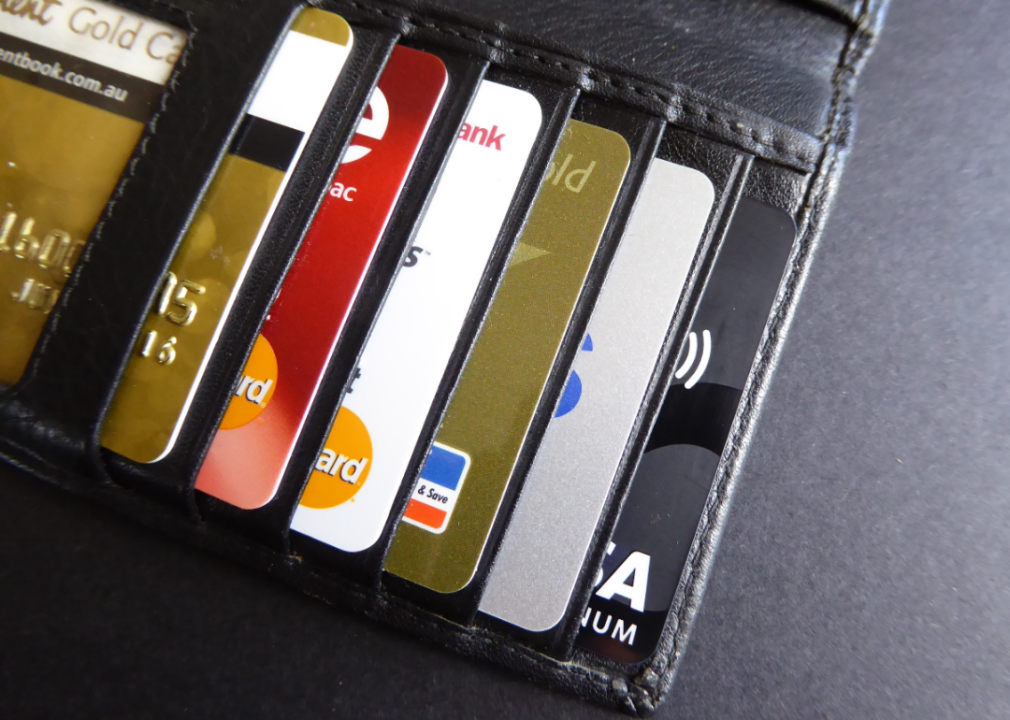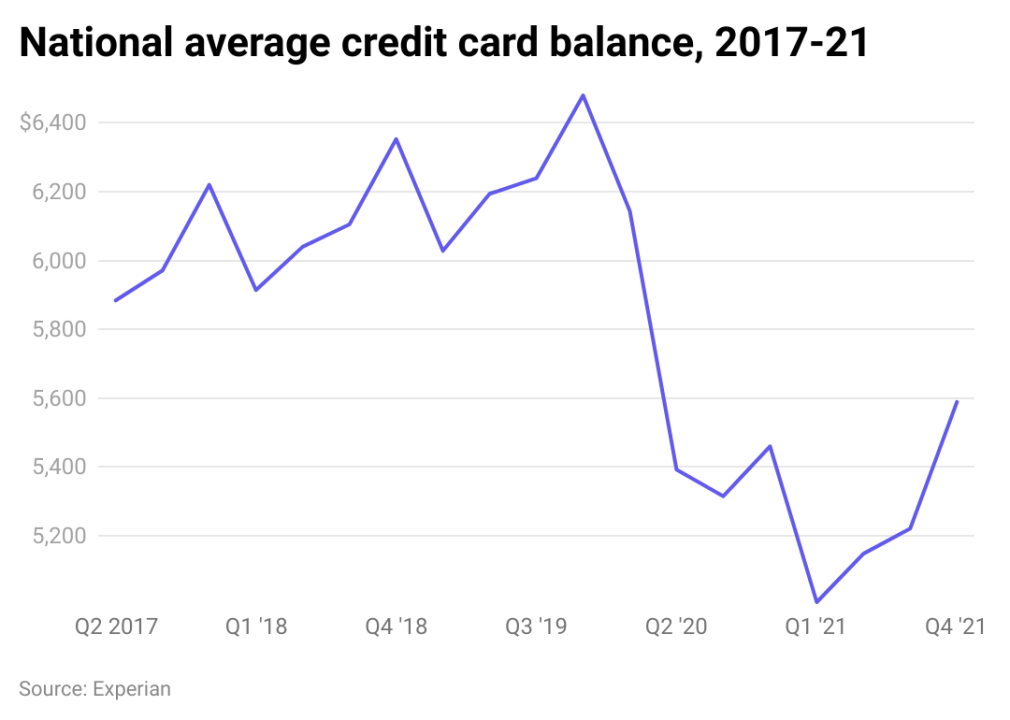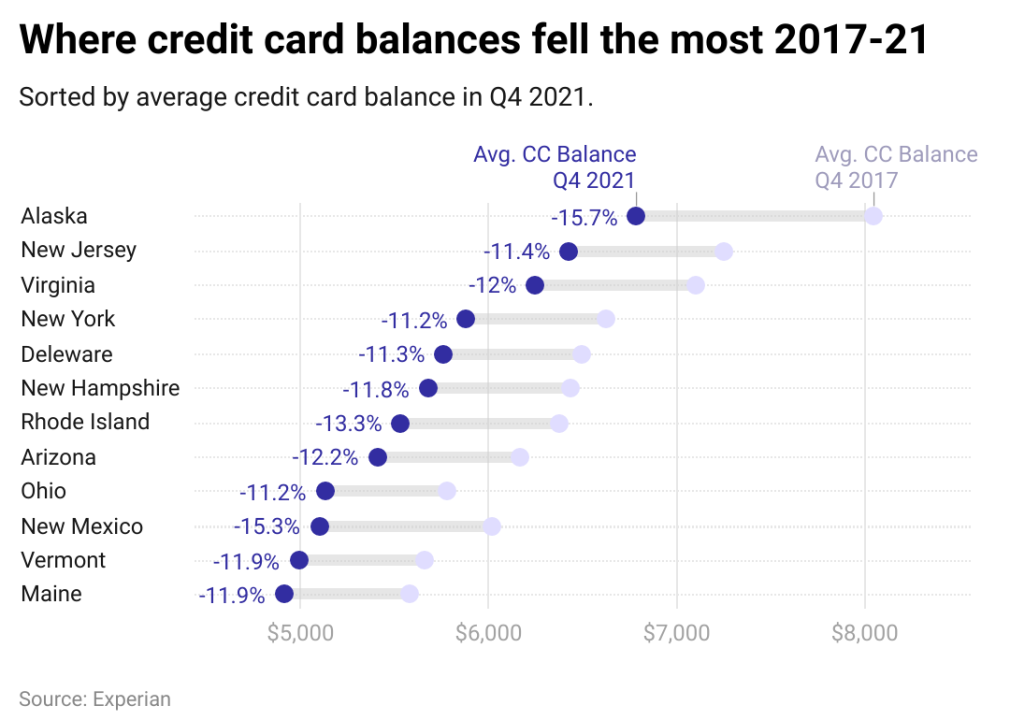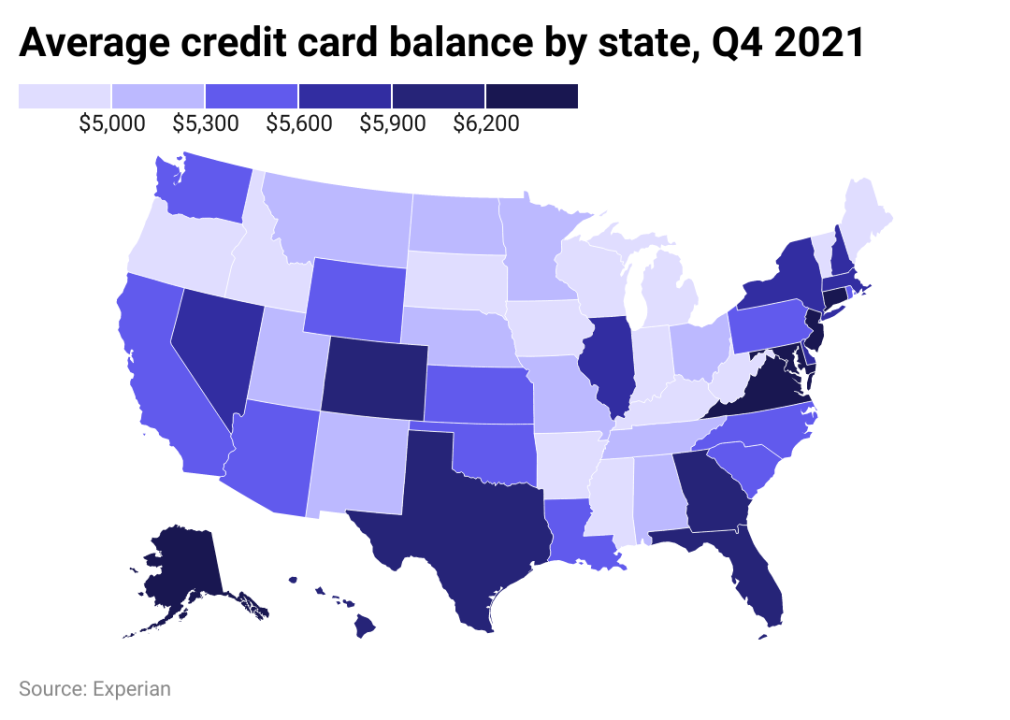Here’s how US credit card debt has changed in 5 years

Canva
Here’s how US credit card debt has changed in 5 years
A colorful mix of credit cards in a wallet
When convenience is the priority, credit cards are king. The 2-by-3-inch plastic rectangle transformed how American consumers shopped: With one swipe, people could buy dinner, cover unexpected or urgent expenses at the last minute, or finance a large household purchase. Credit cards can also be an effective way to build your credit by establishing a track record of on-time debt payments.
Convenience comes with responsibility, however. That same little card can also cause financial woes if not managed wisely. Credit cards have higher interest rates than many other forms of borrowing money, which can add up if balances aren’t immediately paid down. In the world of lending, convenience ain’t cheap.
The average American carries thousands of dollars in credit card debt—an average of $5,589 as of the fourth quarter (Q4) of 2021, according to Experian data. To see how consumer credit habits have changed over time, Experian looked at the average credit card balance at a national and state level going back to 2017.
![]()

Canva
How credit card debt accrues–and gets paid down
A business woman and a man look at payment options online
A credit card is considered revolving credit, and cardholders owe interest on any debt they incur on the card. Unlike installment loans, however, credit card issuers calculate interest based on the account’s average daily balance, not the original debt amount. This means your balance can grow over time as interest accrues on your balance and compounds.
Each credit card comes with an interest rate, also called an annual percentage rate (APR), which varies based on several factors, including the applicant’s credit score and central bank interest rates. In 2021, credit cards had an average interest rate of 16.45%, according to Federal Reserve data. But with the Fed raising interest rates this year, credit card interest rates are likely to go up as well.
Paying off your credit card balance at the end of every billing period is a good habit to get into. While interest compounds daily, the cardholder doesn’t pay any of that interest if the card’s full balance is paid off by the monthly due date.

Experian
How the national average credit card debt has changed over time
Line chart showing the national average credit card balance 2017 to 2021.
At the end of Q4 2021, the national average credit card balance decreased 10.7% since the fourth quarter (Q4) of 2017, and 14% since the most recent peak in Q4 2019.
The steepest drop occurred in the first half of 2020. At the onset of the COVID-19 pandemic, the Federal Reserve Bank lowered interest rates to nearly zero in order to stimulate the economy amid the global health crisis.
In Q4 2021, the annual rate of inflation began to inch up, and Americans were suddenly feeling the financial pressure. Whether shopping for new and used vehicles or home prices and even rental cars, American consumers had to pay more for many products and services.

Experian
States where the average credit card balance fell the most
Range plot showing the states with the biggest change in credit card balances 2017 to 2021.
Collectively, Americans have made significant headway paying off their credit card debts over the past five years. Balances have fallen the steepest in Alaska, New Jersey, and Virginia. The states that paid down credit card balances the most since 2017 are also some of the states with the highest average balances.

Experian
The average credit card balance varies by state
Map of the average credit card balance by state.
As of Q4 2021, Americans had an average credit card balance of $5,589, according to Experian data.
Alaska led all other states with an average credit card balance of $6,787. New Jersey, Texas, and Virginia had the next highest balances on average. The lowest average credit card balances are found in Minnesota, Wisconsin, Iowa, Kentucky, and Mississippi.
This story originally appeared on Experian and was produced and
distributed in partnership with Stacker Studio.





